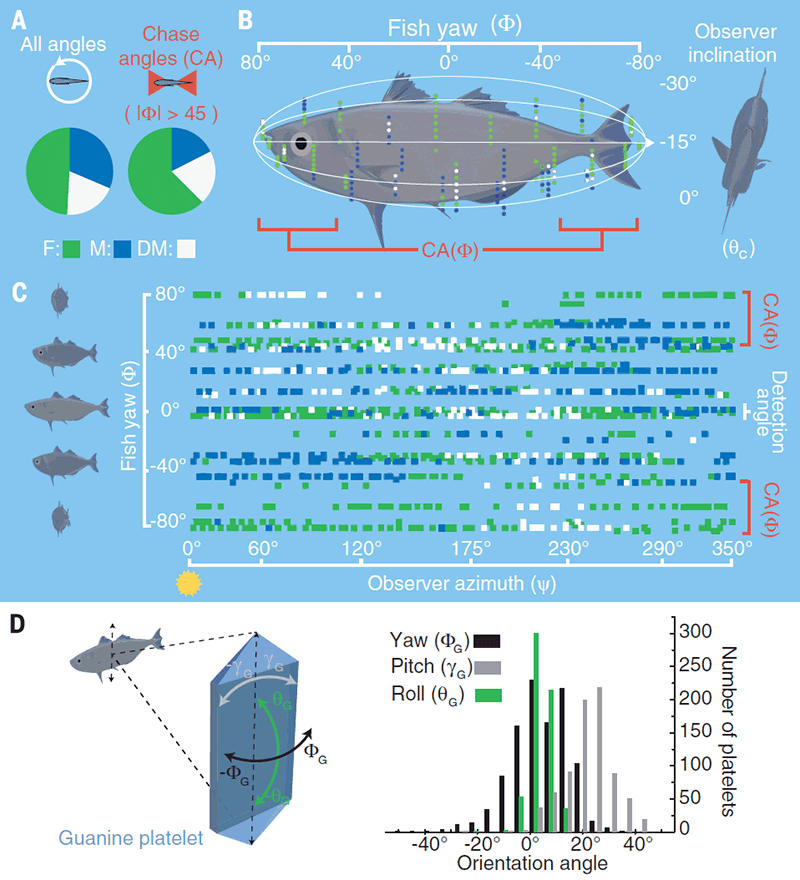Marine fish use the properties of polarized light for camouflage

Unlike the coast, the open ocean is mostly deserted. In such circumstances, harmless fish are very difficult to hide from predators, but evolution still found a way. American scientists studied the structure of fish scales, including using a special 3D camera, and discovered an extraordinary camouflage technology that several times reduces the visibility of fish from the attack side.
“We have long known that fish living in the open ocean possess mostly non-shiny scales, unlike their river and coastal relatives. Now we know why they become invisible in such situations, ” said Michael Twardowski of Atlantic University of Florida in Boca Raton (USA).
As it turned out, in several families of marine fish, scales on the skin contain guanine - they reflect and polarize light, depending on the angle of incidence of the rays. Obviously, the mechanism developed as a result of natural selection.
The illustration above shows how light is reflected, depending on the angle of view. The bottom illustration shows the equipment that was used during the experiment, as well as the measurement results. The equipment registers not only ordinary, but also polarized light in order to maximally simulate the vision of fish.

Figures B and C below show which sides of the fish are the worst viewed. It is almost invisible from the tail and from the head, from where predators most often attack.

Apparently, these are the only creatures in nature that reflect light in this way.
The scientific work "Open-ocean fish reveal an omnidirectional solution to camouflage in polarized environments" is published in the journal Science.
